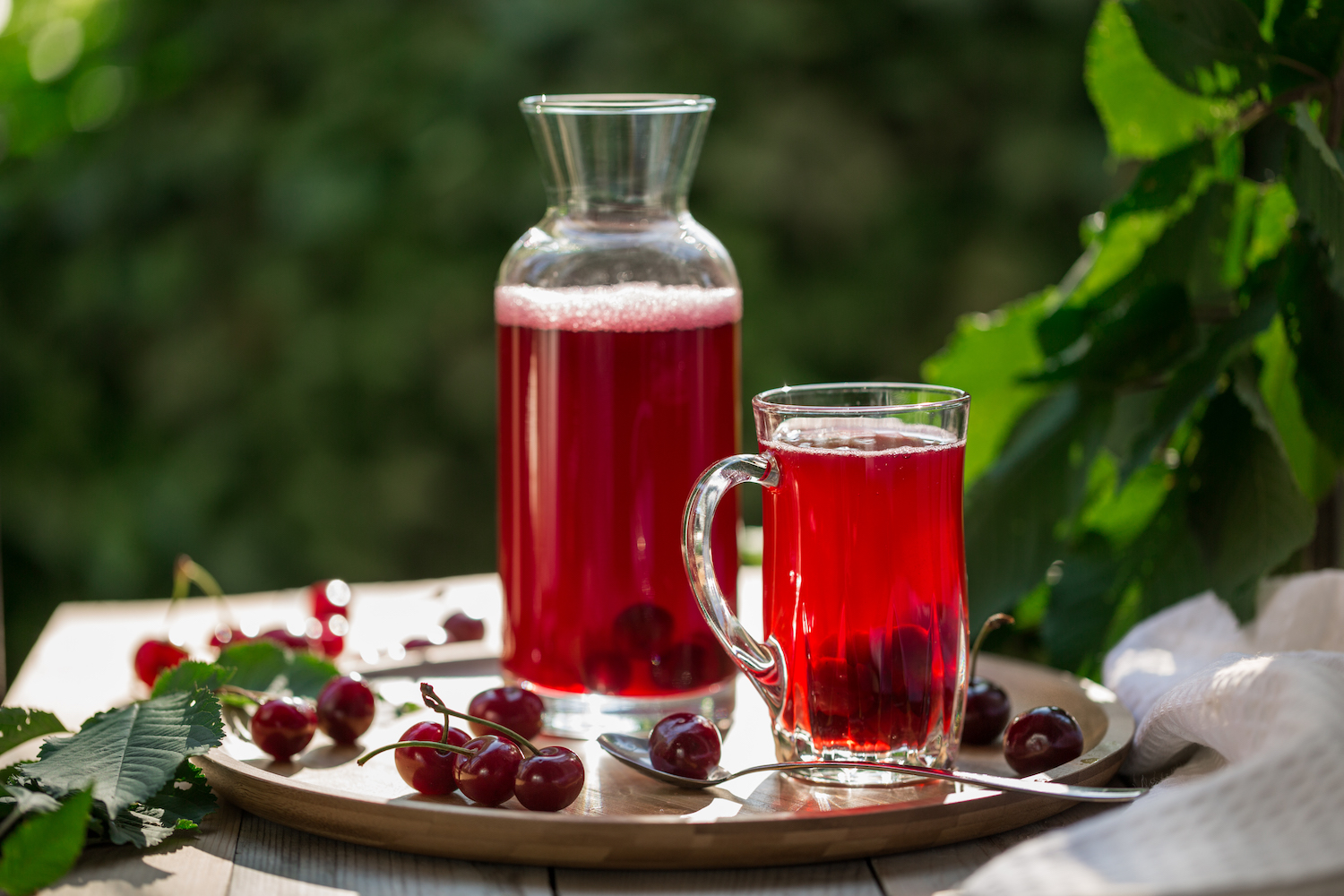What is wheatgrass? First, let’s get one thing straight: this is not the grass that grows in front of your house. Well… unless you happen to be one of the few people that DOES grow wheatgrass in front of your house. Then, uhh, good for you!
Wheatgrass is actually a wheat plant (go figure). Interestingly enough, it is naturally gluten free when harvested without any seeds. Nutritionists have loved this superfood for quite a long time, even dating back to ancient Egypt! To this day, the powerful green remains a strong staple in the superfood world. You can even find it in a couple of our pure and premium blends.
So, why is the food so adored by nutritionists and health gurus alike? Here are five benefits that make this food super.
5 Wheatgrass Benefits
Whether blended into a little liquid shot or into a fine powder (like ours), this fresh green boasts major phytochemicals and antioxidants. Its nutritional profile is maybe among the greatest among all superfoods.
Helps the Body Respond to Inflammation
Because of its antioxidants and vitamin-content (A, C and E), this green dream can help the body respond to inflammation. These phytonutrients help fight against free radicals in the body, which are little molecules that contribute to inflammatory reactions and even aging of the skin.
What’s more, wheatgrass boasts its benefits from chlorophyll. This plant chemical is what helps give greens their color and energy through the photosynthesis process. But what does it do for you? Well, one test tube study suggests that this plant nutrient can help stop the protein that activates inflammation (1).
Its inflammation-fighting nature has inspired a handful of studies that look into whether wheatgrass can help treat inflammatory diseases, like ulcerative colitis. In fact, one study published in the Scandinavian Journal of Gastroenterology showed promise. Participants enjoyed a reduction in symptoms after they consumed 100 ml of juice every day for one month. (2)
Supports Weight Loss
Helping prevent inflammation is just one of this green’s many benefits. Like veggies, wheatgrass can help your weight loss regimen. So, what in particular makes it so great for helping to lower that number on your scale?
Vegetables and grasses contain thylakoids (that’s actually where chlorophyll is stored). A small study published in Appetite suggests this phytonutrient could contribute to weight loss by helping people feel more full. (3) This particular study focused on overweight women. So, if you’re more full, you’re less likely to overeat. This may help you shed some lbs.
What’s another way this plant can help you lose weight? It can help by boosting metabolism and elimination.
Encourages Cleansing & Digestion
Part of what make wheatgrass so great is its ability to aid digestion and gut health. It boasts natural fiber that helps the body break down foods and regulate the digestive cycle. Its nutrition works with the microbiome, not against it, flooding the body with nutrients that encourage healthy elimination.
What’s more, it is thought that the green grass can help soothe digestive troubles, like diarrhea. In a herbal remedy review published by World Journal of Gastroenterology, researchers noted the ability for this plant to help ulcerative colitis patients find relief for their bowel distress (4).
Because it can help support elimination of toxins, wheatgrass also boosts immune health.
Strengthens the Immune System
Wheatgrass is a detoxifying titan. Like most other greens, it helps alkalize the body, balancing out the body’s acidity levels. As we know, a more acidic body may lead to more illness and risk of infection. (5)
Remember this plant’s chlorophyll? Well, this pigment molecule helps the body detox toxins. (6) It’s this nature that can help boost the body’s ability to fight infection. The Journal of Dental Research and Review published a study suggesting the plant can help fight strep infections (like the kind you get in your throat), but more research is needed. (7)
What’s interesting is that many believe wheatgrass can both help prevent cancer and fight cancer cells in the body. Many holistic practitioners have also prescribed it to their patients undergoing chemotherapy, to help relieve symptoms of the treatment. This is believed to be because the green can help rid the cancer cells and help the body absorb vital nutrients more efficiently. (8) We’re hopeful, but of course, more research is definitely needed.
Helps Balance Blood Sugar Levels
As a healthy green, wheatgrass may also help balance blood sugar levels. Studies show that the grass may help through its influence on oxidation and free radicals, like astaxanthin and other superfoods. Because of this, it may help decrease hypoglycemia. What’s more, wheatgrass may help lower cholesterol by decreasing triglyceride levels. (9) This makes it an asset for those with diabetes.
It is worth mentioning that the blood sugar and cholesterol research that is currently available has not been applied to humans, so more research is really needed. However, anecdotal evidence suggests the truth to this, regardless of the lack of medical studies.
Purium’s Wheatgrass
Here at Purium, we use Kamut wheatgrass. It is among the most nutritious superfoods on the planet! Plus, it is one of the most highly studied greens, so medical reviews back it up as well.
Our Kamut is blended with oat grass and alfalfa leaf juice. You can learn more on our website.
Stay happy and healthy!
Cited Sources
- Subramoniam, A., Asha, V. V., Nair, S. A., Sasidharan, S. P., Sureshkumar, P. K., Rajendran, K. N., … & Ramalingam, K. (2012). Chlorophyll revisited: Anti-inflammatory activities of chlorophyll a and inhibition of expression of TNF-α gene by the same. Inflammation, 35(3), 959-966.
- Ben-Arye, E., Goldin, E., Wengrower, D., Stamper, A., Kohn, R., & Berry, E. (2002). Wheat grass juice in the treatment of active distal ulcerative colitis: a randomized double-blind placebo-controlled trial. Scandinavian journal of gastroenterology, 37(4), 444-449.
- Stenblom, E. L., Montelius, C., Östbring, K., Håkansson, M., Nilsson, S., Rehfeld, J. F., & Erlanson-Albertsson, C. (2013). Supplementation by thylakoids to a high carbohydrate meal decreases feelings of hunger, elevates CCK levels and prevents postprandial hypoglycaemia in overweight women. Appetite, 68, 118-123.
- Wan, P., Chen, H., Guo, Y., & Bai, A. P. (2014). Advances in treatment of ulcerative colitis with herbs: from bench to bedside. World Journal of Gastroenterology: WJG, 20(39), 14099.
- Schwalfenberg, G. K. (2012). The alkaline diet: is there evidence that an alkaline pH diet benefits health?. Journal of environmental and public health, 2012.
- Yi, B., Kasai, H., Lee, H. S., Kang, Y., Park, J. Y., & Yang, M. (2011). Inhibition by wheat sprout (Triticum aestivum) juice of bisphenol A-induced oxidative stress in young women. Mutation Research/Genetic Toxicology and Environmental Mutagenesis, 724(1-2), 64-68.
- Rajpurohit, L., Mehta, N., Ankola, A. V., & Gadiyar, A. (2015). Evaluation of the anti-microbial activity of various concentration of wheat grass (Triticum aestivum) extract against Gram-positive bacteria: An in vitro study. Journal of Dental Research and Review, 2(2), 70.
- Gore, R. D., Palaskar, S. J., & Bartake, A. R. (2017). Wheatgrass: Green blood can help to fight cancer. Journal of Clinical and Diagnostic Research: JCDR, 11(6), ZC40.
- Sethi, J., Yadav, M., Dahiya, K., Sood, S., Singh, V., & Bhattacharya, S. B. (2010). Antioxidant effect of Triticum aestivium (wheat grass) in high-fat diet-induced oxidative stress in rabbits. Methods and findings in experimental and clinical pharmacology, 32(4), 233-235.



